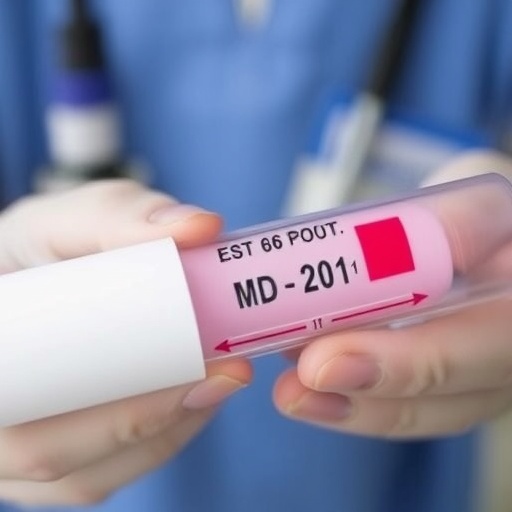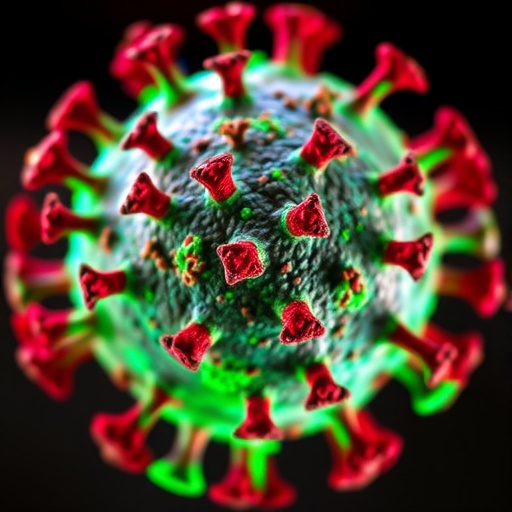BALTIMORE – A new study aims to determine the underlying etiology of seizures and help to target therapy, improve control of seizures, and potentially reduce morbidities in children. Findings from the study will be presented during the Pediatric Academic Societies (PAS) 2019 Meeting, taking place on April 24 – May 1 in Baltimore.
“As a neonatologist working with the team at the Genomics Institute, I’ve seen first-hand that rapid whole genome sequencing (rWGS) can be effective in identifying etiology of unexplained seizures in neonates and subsequently optimizing their care,” said Jeanne Carroll, MD, one of the authors of the study. “Early rWGS can give answers to distressed families, help physicians provide a prognosis, and most importantly may help guide therapy with the potential to impact outcomes. A retrospective analysis of 19 patients who were admitted to the neonatal intensive care unit (NICU), with unclear etiology of seizures received WGS resulting in a molecular diagnosis for six infants. Of those six patients, four received a change in medical management as a result of the genetic diagnosis.”
This study retrospectively identified a cohort of patients admitted in the first 30 days of life with presenting symptom of seizures who also underwent rapid whole genome sequencing during the admission. These cases were reviewed to assess for etiology of seizure, results of rWGS, and changes in management based on rWGS results.
Nineteen patients were identified with average age at admission of four days and average hospital day at which sequencing was sent of 3.3. There were six diagnoses made by rWGS (31.6%). Four patients were later found on neuroimaging to have a stroke and three had changes of hypoxic ischemic encephalopathy (HIE) on MRI. Four of the six diagnoses led to a change in management including three with targeted seizure medications, and one with a referral to neurometabolic specialist and addition of dietary supplements. Two patients were found to have KCNQ2 mutations, both had significant side effects from antiepileptic medications. In each case, the medication regimen was optimized based on genetic findings leading to control of seizures and reduction in side effects from non-targeted therapies. In this cohort there was also a pyridoxine dependent epilepsy, two syndromic causes of seizures and one metabolic condition identified.
The study concluded that rWGS can identify etiology and direct therapy in the neonate with unexplained seizures.
Dr. Carroll will present findings from “Clinical Utility of rWGS in the Evaluation of Neonatal Seizures” on Saturday, April 27 at 9:15 a.m. EDT. Reporters interested in an interview with Dr. Carroll should contact [email protected]. Please note that only the abstracts are being presented at the meeting. In some cases, the researchers may have additional data to share with media.
The PAS 2019 Meeting brings together thousands of pediatricians and other health care providers to improve the health and well-being of children worldwide. For more information about the PAS 2019 Meeting, please visit http://www.
###
About the Pediatric Academic Societies Meeting
The Pediatric Academic Societies (PAS) Meeting brings together thousands of pediatricians and other health care providers united by a common mission: to improve the health and well-being of children worldwide. This international gathering includes pediatric researchers, leaders in pediatric academics, clinical care providers and community practitioners. Presentations cover issues of interest to generalists as well as topics critical to a wide array of specialty and sub-specialty areas. The PAS Meeting will be the premier North American scholarly child health meeting. The PAS Meeting is produced through a partnership of four pediatric organizations that are leaders in the advancement of pediatric research and child advocacy: American Pediatric Society, Society for Pediatric Research, Academic Pediatric Association and American Academy of Pediatrics. For more information, please visit http://www.
Abstract: Clinical Utility of rWGS in the Evaluation of Neonatal Seizures
Background: Seizures are a common reason for admission to the neonatal intensive care unit. Rapidly determining the underlying etiology can help to target therapy, improve control of seizures, and potentially reduce morbidities. The most common causes of neonatal seizures are hypoxic ischemic encephalopathy (HIE), stroke, and intracranial hemorrhage. There are additionally many genetic etiologies for seizures including syndromic causes, primary epilepsies, and metabolic conditions. In some cases, there is a high index of suspicion for a single gene disorder and testing can be narrowly focused. However, more often than not the etiology is elusive. Sequential panel tests and metabolic work up can take weeks to months to complete leading to a missed opportunity to intervene with targeted therapies in the ICU setting.
Objective: Our objective was to evaluate the clinical utility of early rapid whole genome sequencing (rWGS) in neonates with seizures of unclear etiology including diagnostic rate and changes in management based on results.
Design/Methods: We retrospectively identified a cohort of patients admitted in the first 30 days of life with presenting symptom of seizures who also underwent rapid whole genome sequencing during the admission. These cases were reviewed to assess for etiology of seizure, results of rWGS, and changes in management based on rWGS results.
Results: Nineteen patients were identified with average age at admission of 4 days and average hospital day at which sequencing was sent of 3.3. There were 6 diagnoses made by rWGS (31.6%). Four patients were later found on neuroimaging to have a stroke and 3 had changes of HIE on MRI. Four of the 6 diagnoses led to a change in management including 3 with targeted seizure medications, and one with a referral to neurometabolic specialist and addition of dietary supplements. Two patients were found to have KCNQ2 mutations, both had significant side effects from antiepileptic medications. In each case the medication regimen was optimized based on genetic findings leading to control of seizures and reduction in side effects from non-targeted therapies. In this cohort there was also a pyridoxine dependent epilepsy, two syndromic causes of seizures and one metabolic condition identified.
Conclusion(s): Rapid whole genome sequencing can identify etiology and direct therapy in the neonate with unexplained seizures.
Authors: Jeanne Carroll, Shimul Chowdhury, Shareef Nahas, Kristen Wigby, Jeffrey Gold, David Dimmock, Stephen Kingsmore
Authors/Institutions: J. Carroll, K. Wigby, UCSD, Rady Children’s Hospital, San Diego, California, UNITED STATES|J. Gold, Neurosciences, UC San Diego, San Diego, California, UNITED STATES|S. Chowdhury, S. Nahas, D. Dimmock, S. Kingsmore, Rady Children’s Institute for Genomic Medicine, San Diego, California, UNITED STATES
Media Contact
PAS
[email protected]




